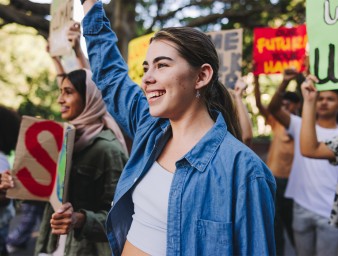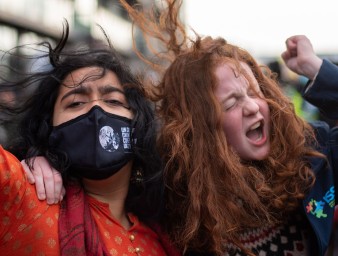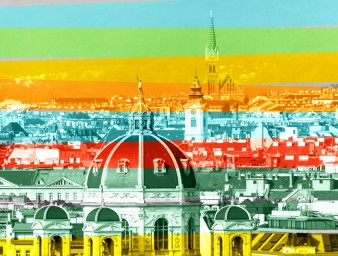Protecting the voices of young human rights defenders
22 September 2021

“We want a country where we can speak about our issues without being bombed, sieged or arrested,” says Farah,* a young female activist from the Middle East. “We as young people should emphasise our inherent right to live in safe places without any threats, especially while practising our civil work.”
Yet, in their quest to challenge injustice and inequalities, young human rights defenders around the globe continue to face a wide array of threats, abuse and barriers.
Young people are one of the five groups most commonly exposed to assaults on their fundamental freedoms in civic space, according to 2019 and 2020 analysis by CIVICUS, a global alliance of civil society organisations and activists.
The recent report, released by the Office of the UN Secretary-General’s Envoy on Youth, in collaboration with UN Human Rights and the Protection Working Group under the Global Coalition on Youth, Peace and Security, outlines these enormous challenges. It addresses the critical gaps in research on the topic, including an analysis of the various forms and gravity of threats against young people in the civic space, and urges much stronger protection globally.
As highlighted by the UN High Commissioner for Human Rights, Michelle Bachelet, speaking at an event launching the report, “young people are always at the forefront of crisis – and fighting for a better future.”
Referring to movements such as Fridays For Future, Black Lives Matter and Me Too, she said that young people have been central in pushing for accountability.
“Young people also provided us with a glimpse of hope and demonstrated how activism could bring about change,” said Bachelet.
The six types of interconnected threats
Through research and interviews conducted for the report, six categories of interconnected threats were identified: sociocultural barriers, which often include harmful stereotypes or negative discourse about youth in the media; financial challenges, such as dependency on others, which may prevent young activists from accessing services that would protect them; and political threats, whereby sophisticated methods and mechanisms are used to discourage and suppress the right to freedom of expression.
There are also legal barriers, which obstruct youth civic participation and offer minimal protection; threats in the digital space, including a wide array of challenges such as online restrictions, privacy issues and surveillance; and lastly, the most severe - physical threats, which include beatings, torture, inhuman or degrading treatment, arbitrary detention, and even the targeted killing of youth activists.
Moving towards a safer space for young people to speak out
According to the report’s findings, the one common problem raised by youth activists around the world is the lack of dedicated spaces to provide a platform for discussion, reporting, and for triggering accountability measures for the threats they endure.
John is a young human rights defender from West Africa, who has been displaced in his own country, and is calling for such safe spaces. “Young human rights activists must be better supported by the authorities, with clear protection policies to promote freedom of expression, which should not be an opportunity for some to misinform or disrespect,” he says.
For Jayathma Wickramanayake, the UN Secretary-General’s Envoy on Youth, the report presents the harsh reality for young activists globally, but it also showcases their resilience, creativity and hope.
“It is our collective responsibility to take these testimonies and recommendations from young people not as a burden to bear, but as a torch to guide our steps towards protecting the dignity, worth and freedom for young people in all their diversity,” she says.
The report recommends – at national and international levels – the facilitation and establishment of ‘open, safe and inclusive’ spaces, where young activists and peacebuilders can come together to discuss the challenges and threats they face and to find common solutions and strategies to overcome them.
The authors therefore urge national and international NGOs, States, and regional and international organizations to find ways to support such youth-led initiatives, and to provide the necessary resources for their independent operation.
As Nazgul, a young human rights defender from Central Asia advises: “Work not only with young people, but work on creating more enabling environments for them. Involve parents, local government representatives, teachers, all the key actors in the daily lives of young people, so that they are able to perceive youth as full-fledged partners.”
At the same time, Aleema, an activist from South Asia, is calling on the UN and the international community to come together to provide the protection that youth rights defenders need.
She also urges young people to display solidarity for their peers, and keep standing up for their rights: “The only thing we can do is to encourage our generations to join the fight.”
*The names of all the young human rights defenders in this article have been changed to protect their identities.
22 September 2021




